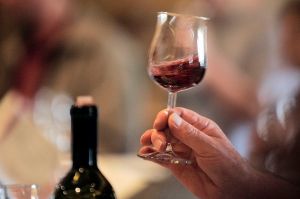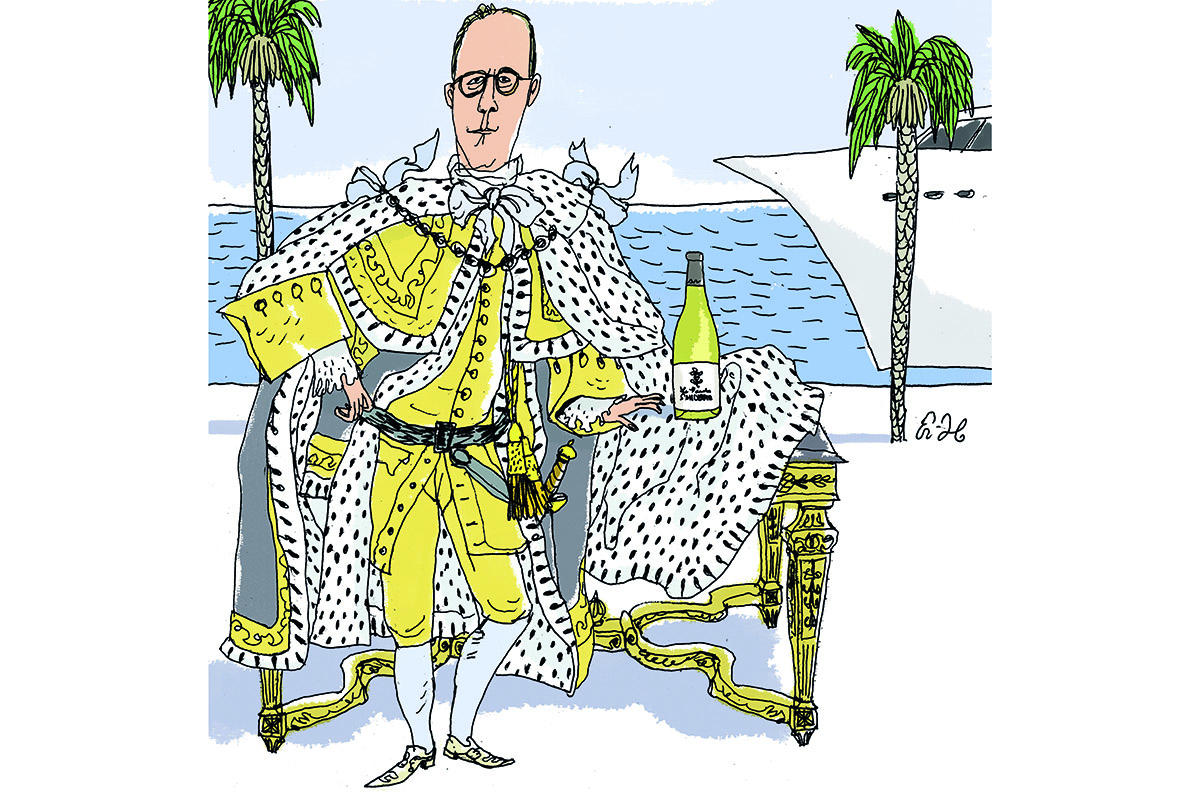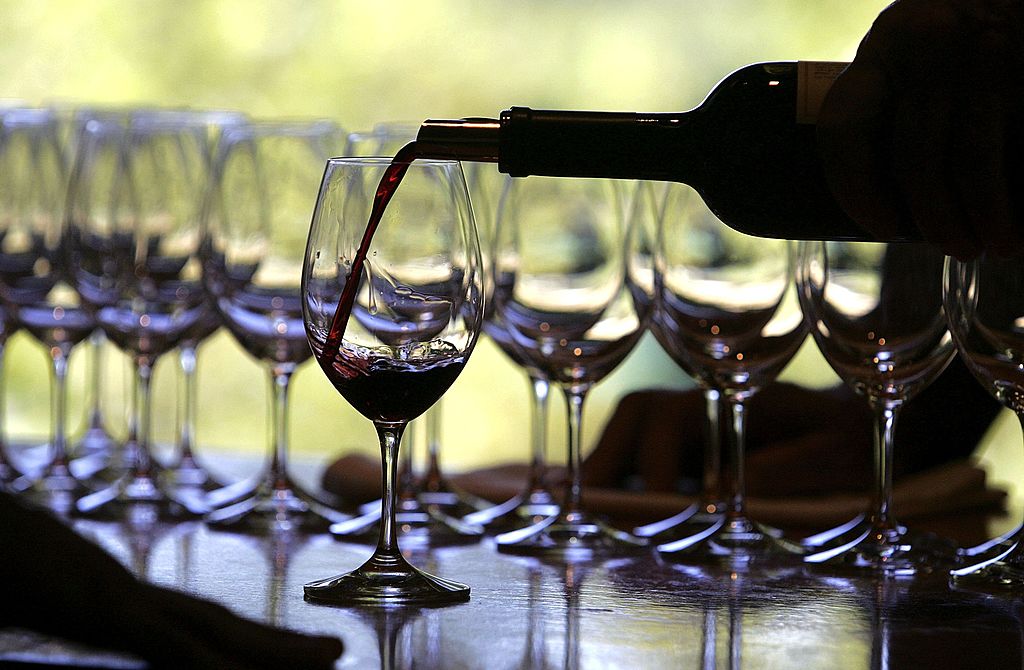On cold nights, a zesty margarita just isn’t going to cut it. You need a bolder tipple: a glass of sherry, the fortified wine favored by retired generals, members of the Diogenes Club and Ordinariate priests swotting up on Thomas Aquinas for the next Sunday sermon.
It’s an appropriate drink with which to reflect on the complexity of life itself. You can go from the crispest blanco sherry, through a series of progressively richer flavors, to the most moreish dulce rum-colored sherry.
When I passed through Jerez de la Frontera in southern Spain’s Andalucía region, every bar was jammed with great quantities and varieties of sherry. I had stumbled — literally, as I was hiking a hundred miles of the Camino from the coastal city of Cádiz to Seville — upon the Mecca of sherry.
The chalky albariza soils of the surrounding “sherry triangle” — a small area designated under EU law — produce enormous grape yields. I walked past vast vineyards that stretched towards the horizon, as the Andalu- sian sun still blazed in October.
The word “sherry” comes from the usual British incapacity to master a foreign language. During previous centuries, “sherry” was the best Brits could manage with “Jerez” (in Spanish, the “j” comes out as an “h,” while I still can’t work out — despite lots of practice — if the “z” is meant to be a “th” or a gentle “s”).
Sherry in its present form was primarily created for the British market, fortified with a strong dash of brandy to survive the journey to England — as with port from Portugal. Just before Admiral Nelson died after defeating the French and Spanish at Trafalgar, he gave instructions that his body be brought back preserved in a barrel of brandy.
The beverage industries of various European neighbors have long depended on the British. I have a couple of Union flags patched onto my rucksack, and I usually receive a hearty greeting from those working on vineyards and in bars across Spain and Portugal. As with pronouncing “Jerez,” understanding the varieties of sherry isn’t helped by having to wrestle with their Spanish names: try saying Pedro Ximénez — the sweetest varietal — after a few glasses. Even the pronounceable ones are confusing in their own ways. The first time the barman suggested a crema — also labeled as “cream” — I expected a milky-looking sherry version of Irish Cream. Tastewise that seemed dubious. Fortunately, crema is actually a delicious dark mahogany dulce sherry.
Jerez has been at the center of viniculture for more than 3,000 years: some sherry bottles are labeled Xérès, the original Phoenician name for the region. When the Greeks and Romans arrived, they began experimenting, adding sweet syrups and boiling grape juice to concentrate the sugar content during winemaking. The imaginative Moors, who conquered the region in the seventh century, are credited with introducing the technique of adding brandy that has given us the fortified sherries of today.
Interestingly, after the region’s Christian reconquest, it was King Alfonso X who apparently bequeathed the idea of tapas to Spain — and to the world. After stopping in a town on the Andalusian coast, he is said to have placed a slice of Ibérico ham on top of his glass to prevent sand blowing into his sherry. The word tapa means “a cover.”
The British got involved with sherry around the fourteenth century. Ongoing feuds with the French meant the Bordeaux supply chain dried up, and the Spanish kindly scrapped export taxes on their wines. The dark and rich sherries which typically come out of Grandma’s cupboard at Christmas are quite different from the sherries drunk by Spaniards, which remain lighter and drier.
In a bar in the town of Lebrija, about halfway between Cádiz and Seville, I sipped my dark, sweet Pedro Ximénez. My policy when it came to ordering was that if two attempts at pronunciation didn’t work, I would then just point. All the old boys were drinking light and amber-colored Manzanillas and Amontillados alongside their tapas. As they eyed my sugary choices, I resisted proposing a toast to both the region’s vineyard growers and Admiral Nelson.
Those old boys were more on trend than me. In the hip Spanish restaurants and tapas bars in New York and San Francisco, they pair blanco sherries with the food. Fino sherry — the driest, palest variety — contains a compound called acetaldehyde that is renowned for its palate-cleansing abilities.
Nonetheless, I’m sticking with Grandma. Those darker sherries work wonders as a sauce poured over vanilla ice cream or as a dessert wine. So kiss me, Hardy. And then pour me a glass of Pedro X.
Sherry menu
Fino (‘fine’)
The classic blanco sherry. The driest and palest of the bunch that is aged in barrels under a so-called cap of flor yeast to prevent contact with the air. Tastes “tangy and yeasty, with almond notes,” says wine.com. Around 15-17 percent alcohol.
Manza
A type of fino that is exclusively produced around the port of Sanlúcar de Barrameda. A dry, delicate and crisp sherry around 15-17 percent alcohol. (Manzanilla pasada is a manzanilla that has undergone further aging or been partially exposed to oxygen, giving it a richer, nuttier flavor.)
Amontillado
A hybrid version that begins as a Fino, which is then fortified — which kills the flor — after which it undergoes oxidative maturation through the solera system using multiple barrels and blending. The result is a darker amber color, with “notes of roasted nuts, tobacco, spice and dried fruit.” 16-22 percent alcohol.
Oloroso (‘scented’)
Aged for a long time while exposed to oxygen, resulting in a darker, richer wine that is “full-bodied, dense and complex, with an intensely nutty character and smooth texture.” 18-20 percent alcohol.
Cream
Made by sweetening an oloroso wine or mixing it with a Pedro Ximénez. Popular as a dessert wine that “can carry flavors of fig, chocolate, dried fruits and roasted nuts.”15.5-22 percent alcohol.
Palo Cortado
A rare and mysterious sherry, known as the “accidental” sherry. Initially aged to be an amontillado but develops a taste profile more like an oloroso when — for reasons still not understood — it loses its flor before any fortification has occurred. The result is of “tremendous elegance and complexity.” 17-22 percent alcohol.
Pedro Ximénez
Beloved by British grandmothers, and anyone else with a sweet tooth, it’s made by fermenting grapes dried on mats to concentrate the sugars before being fortified and put into the solera system for further sherry alchemy. Dark and intense, there are “flavors of molasses, raisins, toffee and fig.” 15-22 percent alcohol.
This article was originally published in The Spectator’s February 2023 World edition.

























